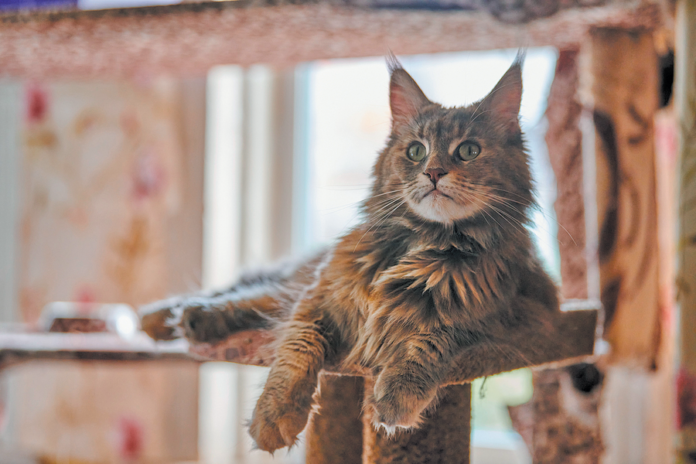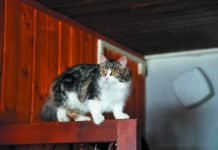Almost every cat parent has seen it — their perfectly relaxed pet suddenly jumping up out of nowhere in a seemingly random burst of energy, darting here and there with almost alarming alacrity. Veterinary researchers and animal behaviorists call these bouts of “crazy” running around Frenetic Random Activity Periods, or FRAPS. You might know them better as the Zoomies.
No one can say with certainty what motivates a cat to start sprinting through the house at top speed and then stopping as mysteriously as she started. But here are some theories.
They are acting out their hunting or escaping instinct. Cats may live in our homes, eat the food we put in front of them, and have no predators to worry about, but that doesn’t undo millennia of genetic coding that tells them to run for and pounce on their meals — as well as run away from animals that might find them to be a tasty snack. And in the wild they may do that dozens of times a day; they’re not like snakes who swallow an animal whole and then hang out with a full belly for a week or two. In other words, cats literally have energy to burn acting out behaviors for which they are genetically primed. And the zoomies may be their way of burning it.
It’s daybreak! Cats are a crepuscular species, meaning they are most active at dawn and dusk. If your cat gets the zoomies when the sun rises (and you still want to be asleep), it may be because her internal clock tells her it’s time to expend energy.
They’ve just relieved themselves. A lot of cats run around right after they’ve finished with the litter box. It might just feel good not to have to “go” anymore.
Shaking off sleep. Cats sleep more hours each day than they are awake. The zoomies may be some cats’ way of rousing themselves after a long snooze, the way we might stand and stretch.1
There are times that the zoomies may signal a problem. If the zooming around is new or more intense than it has been, and especially if it is accompanied by weight loss and more excessive vocalizations than usual, it could be a sign of a problem requiring medical attention, like hyperthyroidism. In other cases, the behavior may indicate senility, especially if a cat starts the behavior in her later years. Zooming has a kind of aimless quality to it, so what looks like the zoomies may actually be disorientation.
Finally, zooming around after going to the bathroom is not always about happiness. If a cat seems uncomfortable or in pain, the behavior could be about an infection or some other illness involving the urinary tract, colon, or rectum.
But in most cases, it’s a completely benign activity and nothing to be concerned about. One of the things that makes cats so interesting to watch is that we don’t know everything about them, especially their motivation for engaging in various behaviors. Zooming is one of those behaviors for which we can allow ourselves to enjoy the mystery.





If you have a long hair cat, zoomies after using the litter box may mean a “cling on” piece of #2 on her fur she is running off……